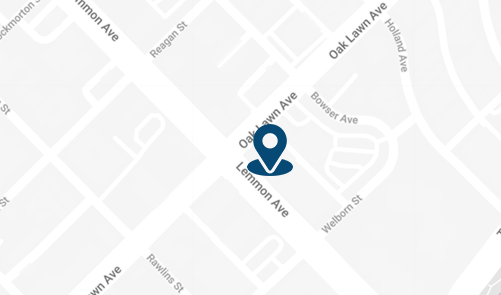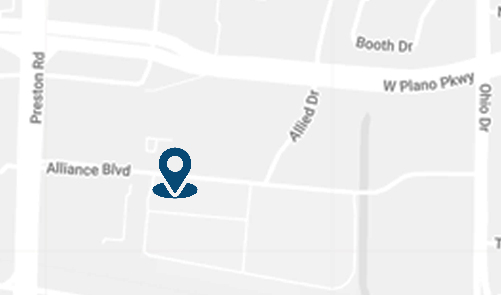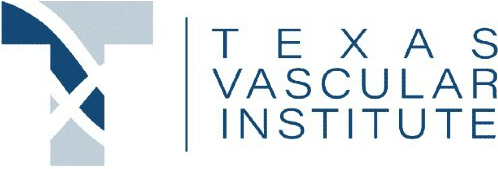By: Dr. Dev Batra | 01.30.23
The veins in your circulatory system play an important role. They deliver deoxygenated blood from the tissues and organs back to the heart, having to fight the force of gravity moving from the lower extremities to the chest. With all that work, is it any wonder that vein diseases are so common?
Vein conditions like varicose veins, chronic venous insufficiency, and deep vein thrombosis affect nearly 30% of the population, and they’re responsible for up to 80% of cases of leg ulcers.
At Texas Vascular Institute in Dallas, Texas, interventional radiologist Dr. Dev Batra specializes in screening for, diagnosing, and treating vein problems. He’s passionate about the work he does, and he wants you to be informed about the risks of developing vein disease. He’s put together this guide to help you navigate through the considerable amount of information. While some of the risks are the same or similar across diseases, some are different, so we’ll look at the conditions separately.
What are varicose veins and chronic venous insufficiency?
Varicose veins are one of the most common vein diseases, affecting up to 3 in 10 adults, most of them women. They’re also one of the leading causes of chronic venous insufficiency (CVI).

Causes
To be able to pump blood continuously against the pull of gravity, your veins, especially your leg veins, contain one-way valves. They open, allowing the blood to flow past them, then close, preventing backflow. If, however, the valve becomes weakened or damaged, it may not close properly, and blood can then flow backward along its path, often pooling around the damaged valve. This leads to engorged veins that, when close to the surface, appear as ropy lengths of red, blue, or purple protrusions on the skin — varicose veins.
Varicose veins, by themselves, are not dangerous, but they can lead to chronic venous insufficiency. Any time your veins have difficulty returning blood from your limbs back to the heart, it’s referred to as venous insufficiency. Not treated, this can lead to a chronic condition with symptoms including:
- Swelling in the lower legs and ankles
- Achy or fatigued legs
- Leathery or shiny skin on the legs
- Flakey or itchy skin on the lower legs
- Ulcers on the lower legs, ankles, or feet
The disease is most common in women in their 40s and men in their 70s.
Risks
Risks for varicose veins include:
- Aging
- Being female
- Being overweight
- Pregnancy
- Smoking
- Standing for long periods
Risk factors for CVI include all of the above, plus:
- Heart disease
- History of leg trauma
- Sedentary lifestyle
- Multiple pregnancies
- Prior cases of deep vein thrombosis (DVT)
- A family history of DVT

What is deep vein thrombosis?
Researchers estimate that over 900,000 people have DVT, and as many as 30% of them will die of the condition in the first month after diagnosis.
Causes
DVT develops when a blood clot develops in one of your deep veins — it’s usually in the leg, but it can occur in the arms or pelvis as well. DVT is a dangerous health condition, since if the blood clot in your leg breaks free, it can travel quickly through your veins into your lungs, causing a pulmonary embolism. If a clot breaks off in your arm or elsewhere in your body, it may lead to a stroke.
Warning signs of DVT include:
- Swelling in the leg, ankle, or foot
- Cramping in the calf of the affected leg
- Unexplained, severe pain in the foot and ankle
- Skin that’s warmer to the touch than the surrounding area
- Skin that appears pale blue or red over the affected area
Texas Vascular Institute uses vascular ultrasounds to identify and precisely locate any blood clots in your veins. We might prescribe blood thinners or suggest compression stockings to support healthy circulation and alleviate some of your symptoms. In severe cases, we might recommend a minimally invasive procedure to destroy or remove the clot.
DVT can also lead to Post-Thrombotic Syndrome (PTS), a chronic condition that occurs in up to 50% of patients with a history of DVT and can lead to permanent disability. It happens when the clot organizes around the fragile deep-vein valves, damaging them permanently. Symptoms include aching or heaviness in the legs, swelling, cramps, and skin changes.

Risks
Risk factors for DVT include:
- Age
- Major surgery or trauma
- Hospital stays over three days
- Immobility or paralysis
- Estrogen-containing medications
- Pregnancy
- Chronic medical conditions (inflammatory bowel disease, lupus, coagulopathies)
- Cancer
- Obesity
- Previous venous thromboembolism (VTE)
Are you concerned about your vein health, whether you’re showing symptoms yet or not? Give Texas Vascular Institute a call at 972-646-8346 to schedule an appointment, or book one online.
Read more blogs
What Is Heat Edema?
Learn what heat edema is, what causes it, and when it could signal a vascular issue. Learn how to manage it and when to seek vascular care.
Why Are My Veins Blue?
Wondering why your veins look blue under your skin? Learn the science behind vein color, how light affects what you see, and what it means for your health.
10 Warning Signs Of Poor Circulation And How To Fix It
Have you ever noticed your feet always feel cold, or your legs cramp up when walking? These could be warning signs of poor circulation, a condition that can impact your daily life and overall health.
WHAT OUR PATIENTS
have to say
Texas Vascular Institute always appreciates feedback from our valued patients. To date, we’re thrilled to have collected 378 reviews with an average rating of 5 out of 5 stars. Please read what others are saying about Texas Vascular Institute below, and as always, we would love to collect your feedback.
Leave a Review
Amazing Practice
I'm very particular with my Healthcare and tend to be cautious with referrals to specialists. This office is amazing from the first point of contact. Their staff are friendly, professional and highly knowledgeable. Then the Dr is just as amazing as his staff, absolutely brilliant. Office manager Jessica has this office running like a well oiled machine and does so with a smile, an air of confidence, kindness and professionalism. Love this practice!!
- Richard G.

Beyond Thankful
Dr Batra and his staff are amazing! We are so grateful to have found him. Everyone is so kind and so caring and Dr Batra explains everything so well and does procedures with excellence. Beyond thankful to be under their care!!!
- Bitsy P.

Gold Standard
This is a gold standard for how a medical practice should be run. I was promptly seen at my scheduled time, my ultrasound was thorough and I received plenty of attention and care from the staff and Dr.Batra.
- Weronika L.
INSURANCE
We accept most major insurance plans. Please contact the medical office for all insurance related questions.









8330 Meadow Rd #100
Dallas, TX 75231
For Appointments: 972-798-4710
General Inquiries: 972-646-8346

809 West Harwood Rd, Suite 101,
Hurst, TX 76054
For Appointments: 972-798-4710
General Inquiries: 972-646-8346

4716 Alliance Blvd Suite #180,
Plano, TX 75093
For Appointments: 972-798-4710
General Inquiries: 972-646-8346

